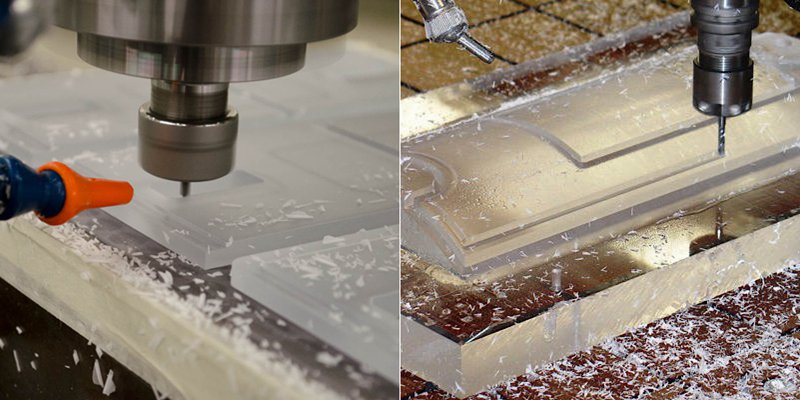- June 9, 2023
Several product designers across industries use plastic polymers for precision machined parts. Polycarbonate and acrylic are popular materials that manufacturers consider optical and clear parts.
Nevertheless, selecting between machining polycarbonate vs. acrylic for your project can be challenging because these materials offer varying characteristics. Therefore, it is crucial to understand the unique properties of these materials to decide the one suitable for your product.
This article provides discusses in detail the differences between machining acrylic and polycarbonate, including their properties, applications, and surface finishes.
Differences Between Polycarbonate and Acrylic (PMMA)
This section discusses the main differences between machining acrylic and polycarbonate materials considering their unique characteristics.
Material Characteristics and Applications
Polycarbonate Properties and Applications
Transparent polycarbonate offers 88% light transmittance, allowing excellent visibility in machined parts. Its properties make it a suitable plastic for applications requiring high stress or impact resistance. PC offers average resistance to weather, but it is not resistant to UV light.
Polycarbonate material is applicable in making greenhouses, electrical and electronic appliances, safety equipment, automotive components, office equipment, and outdoor signage. Likewise, product engineers use PC for transparent structural parts or optical parts.
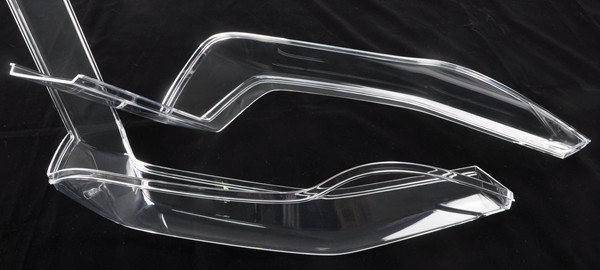
Acrylic (PMMA) Properties and Applications
On the other hand, transparent acrylic material possesses superior optical clarity with precisely 92% light transmission, allowing excellent visibility. It is one of the best plastics with remarkable weather resistance properties because it is not susceptible to hydrolysis or yellowing.
More importantly, it offers better resistance to UV radiation when formulated with UV stabilizers and operates within a temperature range of 40-80ºC. However, note that acrylic has a lower melting point and heat resistance, which causes it to deform at lower temperatures.
Although PMMA is relatively brittle and has poor resistance to impact, its excellent optical properties, light transmission, and weather resistance make it a widely used plastic in various industries, including automotive requiring transparent parts. Acrylic is commonly used in producing aquariums, display and signage, picture frames, architecture and design components, and acrylic nails.
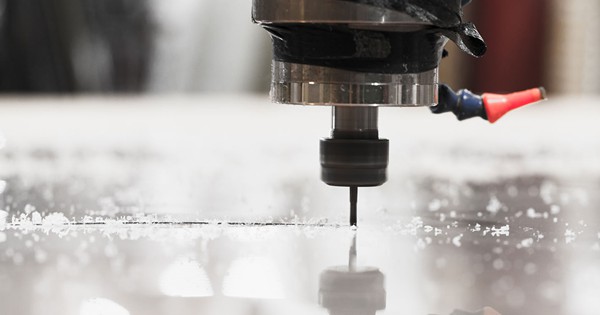
Processing and Surface Treatment
Machining Polycarbonate and Finish Considerations
Transparent PC is a tough and impact-resistant material with excellent strength, which require a longer machining time. You can machine polycarbonate with milling machines, drills, and lathes. In addition, it can be disassembled and re-glued into different shapes. Polycarbonate products are more compatible with painting and vacuum-plating but cannot be water plated.
Polycarbonate polymer has a low melting point, so avoid excess heat buildup during CNC machining. However, the machined polycarbonate surface is usually translucent and difficult to polish to transparency by hand.
Thus, if your product requires optical clarity, it is advisable to consider fumigation. The transparency that fumigation offers is inferior compared to PMMA. It is advisable to apply a hard coat or specialized polycarbonate sheet on polycarbonate components to prevent them from scratches.
Machining PMMA and Finish Considerations
Transparent PMMA (Acrylic) requires a more careful machining procedure due to its brittleness. PMMA is a versatile material capable of being dismantled and re-glued for different purposes. In addition, it is essential to use sharp tools for CNC acrylic to prevent heat buildup during machining, as this material has a lower melting point.
Further, you can enhance the acrylic parts’ surface by painting, vacuuming, or water plating. Although acrylic offers better optical clarity, you can also polish acrylic material for superior optical transparency.
More importantly, you can protect the surface of machined acrylic parts from scratches by coating them or flame polishing them—however, post-processing grinding and polishing increase overall cycle time.
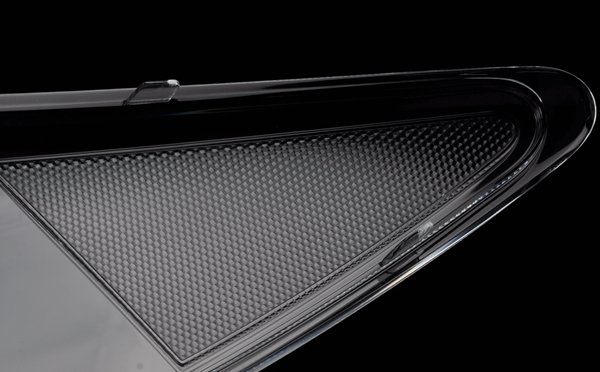
Differences in the Polishing Process
Although both polycarbonates vs. acrylics possess similar pre-polishing procedures in plastic fabrication, their polishing process is a little different.
Polishing Polycarbonate
You have to prepare the surface of the polycarbonate plastic by wet-sanding it with fine-grit sandpaper to eliminate all deep scratches, making the surface smooth and appealing.
Vapor polishing is an ideal polishing polycarbonate method. It enhances machined polycarbonate component physical properties. More importantly, this technique is suitable for small features and enhancing parts’ internal and external surface finishes.
Therefore, the transparent polycarbonate parts can achieve a smooth and appealing surface with vapor polishing. Specialized polycarbonate polishing compound or plastic polish helps to smoothen the surface of the polycarbonate, enhancing its clarity.
Polishing PMMA (Acrylic)
On the other hand, for components with optical requirements, clear hand polishing works best for PMMA (Acrylic) machined parts. However, it is advisable to clear the surface before polishing the transparent acrylic.
Hence, use a coarse abrasive first and later progress to finer grit abrasive before applying the polishing compound with a cloth, buffing wheels, or polishing pad. Finished acrylic products usually have a clear surface, free of any scratches, and with quality optical finishes.
Machining Polycarbonate vs. Acrylic: How to Choose the Right One for Your Project?
The comparison between polycarbonate and acrylic provides a clear and safe way to choose the suitable material for your project. Knowing the differences between machining acrylic and polycarbonate helps to determine the appropriate material for a specific application. Below are some of the considerations that help to choose right between the two materials.
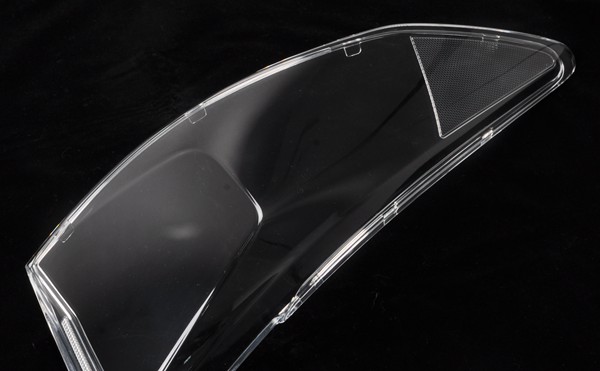
Ask for High-Gloss Finish and Better Light-Transparency
If your products require a high-gloss finish and excellent visibility, acrylic is a perfect choice because it offers exceptional light transmission and transparency. However, it is vulnerable to cracking when subjected to high stress or impact.
It would help to note that acrylic machined parts are susceptible to degradation due to long-term UV radiation exposure. Therefore, it is advisable to use UV stabilizers for your acrylic parts intended for outdoor applications.
Requires High Resistance to Impact
Although acrylic offers higher light transmission, polycarbonate provides higher impact resistance and operating temperature. Hence, a PC is ideal when your product requires high strength and low-temperature resistance.
Needs High Resistance to Heat
PC is more ductile than acrylic, allowing machinability and formability ease. While polycarbonate offers better heat resistance than acrylic, acrylic is more resistant to chemicals and other corrosive solvents than polycarbonate.
Nevertheless, note that factors such as material, polishing technique, the severity of the surface roughness, and available equipment will determine the final surface quality of your product. Therefore, it is advisable to consider all these differences to know the suitable material between acrylic vs. polycarbonate for a product.
Get Excellent PC and PMMA Parts with WayKen
WayKen is a reliable plastic CNC machining service provider for high-quality and accurate PC and PMMA parts. Our professional engineers and machinists have a vast knowledge that allows us to offer superior-quality parts made with engineering plastics such as acrylic and polycarbonate.
We also offer comprehensive machining capabilities including CNC machining, 3D printing, vacuum casting, rapid tooling, etc. All of these help us meet your unique requirements no matter what tight tolerance and surface treatments. Contact us today, let’s handle your prototyping and part production runs at shorter lead times and competitive prices.
Conclusion
Machining polycarbonate vs. acrylic offer unique properties required in different applications, making these materials ideal alternatives to glass. This article has compared the differences in the material characteristic, applications, processing, and surface treatment options. However, determining the perfect material for your products will depend on your needs.
FAQs
Does acrylic material crack easily?
Acrylic is more rigid and susceptible to cracking when drilled, a setback you must consider when CNC machining plastic components.
How can I cut polycarbonate without cracking It?
You can carefully cut polycarbonate with tools such as a jigsaw or circular saw without sustaining cracks due to the length of the saw.
Which is stronger polycarbonate vs. acrylic?
Even though both polycarbonate and acrylic offer different features, polycarbonate is the stronger sheet, while acrylic has a shiny surface compared to polycarbonate.

